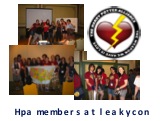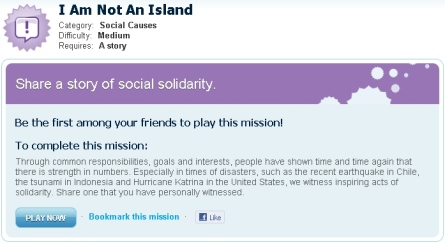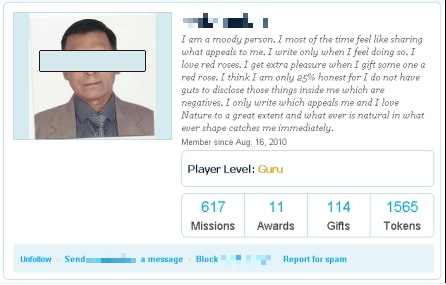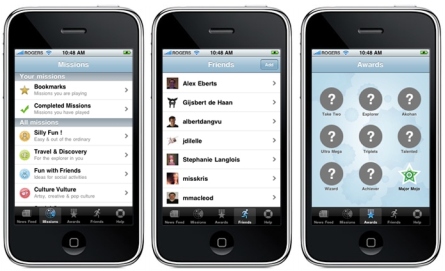"Does This Technology Serve Human Purposes?": A "Necessary Conversation" with Sherry Turkle (Part Three)
/As you describe the many kinds of anxieties, uncertainties, disappointments, and frustrations which surround technology in everyday life, it sounds like many people are unhappy with current configurations and most have harsh judgments of the uses of new media by others in their friends and family, yet few people are breaking out of the patterns you describe. Why not?
I think that we are at a point of inflection. Our lives are enmeshed with our new technologies of connection and ever more so. We now have more experience of what this means for us as individuals, for our relationships with our families, with our parents, with our children, with our friends, with our neighbors. We are coming to a greater understanding of what this means for us as politically, both in our own country and globally.
It has taken time for people to understand where life with this new kind of technology has brought them. Things came to them one gadget at a time. A phone, a navigation system, a way to listen to music, a new way to read books, books "on tape" became something else . . . . and now we catch up to the idea that positioning and navigation translate into surveillance and that using social media as though it were a neutral "utility" ignores important issues about privacy and ownership of personal data.
I don't think that we grownups who "gave" this new communications regime to our children thought it through on several of its critical dimensions. What is intimacy without privacy? What is democracy without privacy? These are not easy questions. But they are starting to be questions that people are thinking about. They begin to have concrete meaning as people come to a new kind of life and have enough experience to take its measure.
On the simplest level, when I talk to parents who realize that it makes them anxious to walk to the corner candystore with their child without taking their cell phone, who cannot go to the playground with their child without bringing their e-mail enabled device, who text in the car while driving with their children in the back seat, it seems clear to me that we are not at a point of stable equilibrium. These people are not happy.
So my qualified optimism about change comes from my sense that the people to whom I have been talking are not happy and are genuinely searching for new ways of living with new technology. I hear more and more about "Internet Sabbaths" during which families disconnect for a day or a weekend. Some families modify the Sabbath and declare two hours a day as off-the-grid family time.
There is no option in which we give up on our new devices. They are our partners in the human adventure. What we have to do is find a way to live with them that is healthier. A digital diet that is better for our health and the health of our families. It took a long time for Americans to learn that a diet high in sugar and processed foods was not healthy. It is going to take a long time for people to develop strategies, individually and collectively, to live with our new technologies in the most healthy way. But the stakes are high and we can get this right.
Your book describes a world where technological demands often supersede human needs, yet you are insistent that you are not anti-technology. So, what do you see as the gains which new media have brought into the culture?
In the domain of communications technology, one of the things that excites me the most is when technologies of the virtual enhance our experiences of and in the physical real. So, ironically, one of the earliest uses of the Internet as a social media, how MeetUps were used in the Howard Dean campaign in 2004, remains an inspiration to me. People "met" online for a political purpose and then "met up" in the physical world. They did not fool themselves into thinking that political action consisted of just giving money online or visiting a website and leaving a "thumbs up" sign on it.
MeetUp continues in this tradition as do many other online groups that organize in the virtual and connect in the physical. We have seen this play out on the most dramatic scale in political life where despots may be challenged by groups brought together by social networking in all of its many forms.
I am often asked this question: "You are so critical of social networking. But what about Egypt" My criticism of social networking boils down to the necessity for us not to redefine the social as what the social network can do. The social encompasses a great deal more. This is not to put the social network down, it is simply to put it in its place. So there is no conflict between the magnificence of what the social network can do for the overthrow of tyrants and how it can get in the way of the development of teenagers who need to engage with each other face to face.
On a personal note, I recently attended a reunion of my fifth grade class. This was the fifth grade class from PS 216 Brooklyn. This fifth grade class would have never had a chance of meeting had it not been for Facebook. One person from the class had been connected with several others and then searched Facebook for a few more names she remembered. Those people remembered a few more names. Within six months, our fifth grade class was on the roof terrace of the Peninsula Hotel in New York. It was a small miracle. It was a gift, a profound gift. Yet in the annals of the social network, my story is banal.
You suggest that we are using new media to deal with the anxiety of separation. Is this separation anxiety itself a product of our reliance on technology or is it a reflection of, say, the increases of divorce and mobility in American culture over the past several generations? Are there ways in which the use of social media is a rational response to those social and cultural disruptions, allowing for old friends to remain in contact despite geographic distances or for separated parents to remain active parts of their children's lives?
I think it is easy to make distinctions in this domain. A parent who uses social media to keep up with a child living away from home or a child who uses social media to keep up with a parent in a different city - one recognizes and respects these cases when one sees them. My concern is with very different kinds of cases. Parents who cannot tolerate their eight year old child not having a cell phone. Children who have developed a style of relating that I characterize as "I text therefore I am" or "I share therefore I am."
To put it too simply, things have moved from a style of relating where one thinks: "I have a feeling, I want to make a call" to "I want to have a feeling, I need to send a text." In other words, the act of sharing a nascent feeling becomes part of the constitution of the feeling.
The problem is that when we use other people in this way, as needed elements on the path toward our having our feelings, we can move toward a misuse of others. We are not relating to them as others but as what psychologists call "part objects." We are using them as spare parts to support our fragile selves.
This takes the notion of an "other directed" self to a higher power. Our technology supports a culture of narcissism digital-style. It is a kind of self that does not tolerate being alone. And yet, psychology teaches us that if you do not teach your children to be alone, they will only know how to be lonely. We are forgetting this lesson in our culture of hyper-connection. These kinds of anxieties of connection are different from the "rational responses" to staying in touch to far-flung family and friends.
In your discussion of Chatroulette, you talk about "nexting," while elsewhere, you describe "stalking". First can you explain the two concepts and then tell us what you see as the relations between them? Is the indifference to others implied by Nexting the flip side of the kinds of obsessive interest in other people's business online represented by stalking?
What both nexting and stalking have in common is the objectification of people who we meet on screens. We do not consider them in their humanity. They have a profound similarity. And this, too, is one of the major themes of Alone Together: we are at a moment of temptation. It is to treat machines as if they were people and to treat people as if they were machines.
In what ways has the persistence of information online forced you to revise earlier arguments about the potential to protean plays with identity? It seems these days, on the internet, everyone knows you are dog and many know what dog food you eat.
Henry, this is beautifully put. My earlier enthusiasm for identity play on the Internet, for what Amy Bruckman called the Internet experience as "identity workshop" relied heavily on the work of psychologist and psychoanalyst Erik Erikson. Erikson wrote about the developmental need for a moratorium or "time out" during adolescence, a kind of play space in which one had a chance to experiment with identity. In the mid-1990s, I wrote about the Internet as a space where anonymity was possible and where one could experiment with aspects of self in a safe environment.
Today, adolescents grow up with a sense of wearing their online selves on their backs "like a turtle" for the rest of their lives. The internet is forever. And anonymity on the Internet seems a dream of another century, another technology. People still use game and virtual world avatars and social network personae for identity play. But the expectation of a parallel, distinct, and anonymous virtual life is no longer a clear starting expectation.
It cannot be. Many of these experiences begin by registering with a credit card.
You are skeptical of the value of the term, addiction, to describe some of the kinds of behavoir you criticise in the book. What do you see as the limits of addiction as a way of understanding what's going on here?
No matter how much the metaphor of addiction may seem to fit our circumstance, we can ill afford the luxury of using it. It does not serve us well. To end addiction, you have to discard the substance. And we know that we are not going to "get rid" of the Internet. We are not going to "get rid" of social networking. We will not go "cold turkey" or forbid cell phones to our children. Addiction--with its one solution that we know we won't use--makes us feel hopeless, passive.
We will find new paths, but a first step will surely be to not consider ourselves passive victims of a bad substance, but to acknowledge that in our use of networked technology, we have incurred some costs that we don't want to pay. We are not in trouble because of invention but because we think it will solve everything. As we consider all this, we will not find a "solution" or a simple answer. But we cannot assume that the life technology makes easy is how we want to live. There is time to make the corrections.
You describe your book as an attempt to start a conversation. What has been your sense so far of the conversation which it has generated? What have people misunderstood about your book?
I wrote Alone Together to mark a time of opportunity. So for example, the essence of my critique of the metaphor of Internet "addiction" is that it closes down conversation, because it suggests a solution that no one is going to take. Addictive substances need to be discarded. We are not going to discard connectivity technology.
We need to form a more empowering partnership with it, one that shows (for example) greater respect for our needs for privacy, solitude, times of non-interruption. In some areas the need for empowerment has reached a state of great urgency, for example, in the area of privacy. Mark Zuckerberg, the founder and CEO of Facebook, has declared privacy to be "no longer a social norm."
In Alone Together, I question such assumptions. Privacy may not be convenient for social networking technology, but it seems to me essential to intimacy and democracy. This is one of the conversations I wanted to contribute to. Others include conversations about child development, connectivity, autonomy, and narcissism. I think one of the most important sentences of my book is "If we don't teach our children to be alone, they will only know how to be lonely." I want people to talk about this when they give their eight year olds smart phones.
And yet much of the reaction to Alone Together criticizes me as though I have told the world to "unplug." As though I have accused technology of causing a new epidemic of mental illness. And as though I have said that technology is making us less human. I have been portrayed as an anti-technology crusader. Reviewers analyze why someone like me, someone who was once on the cover of Wired magazine, could now, not "like" technology. Commentators talk as though technology and I were dating and I, capriciously, have decided to cheat on him.
This rhetoric points to a serious problem. Technology is not there for us to like or not like. Our job is to shape it to our human purposes. When you say a technology has problems that need to be addressed, people are quick to interpret you as saying that it offers nothing. In Alone Together I write of "necessary conversations" that lie ahead. I wrote the book in the hope of sparking some of them. I'm glad that people are talking. But sometimes it can be hard to know if you are in a conversation if people are shouting.
Sherry Turkle is Abby Rockefeller Mauzé Professor of the Social Studies of Science and Technology in the Program in Science, Technology, and Society at MIT and the founder (2001) and current director of the MIT Initiative on Technology and Self. Professor Turkle received a joint doctorate in sociology and personality psychology from Harvard University and is a licensed clinical psychologist.
Professor Turkle is the author of Psychoanalytic Politics: Jacques Lacan and Freud's French Revolution (Basic Books, 1978; MIT Press paper, 1981; second revised edition, Guilford Press, 1992); The Second Self: Computers and the Human Spirit (Simon and Schuster, 1984; Touchstone paper, 1985; second revised edition, MIT Press, 2005); Life on the Screen: Identity in the Age of the Internet (Simon and Schuster, 1995; Touchstone paper, 1997); and Simulation and Its Discontents (MIT Press, 2009). She is the editor of three books about things and thinking, all published by the MIT Press: Evocative Objects: Things We Think With (2007); Falling for Science: Objects in Mind (2008); and The Inner History of Devices (2008). Professor Turkle's most recent book is Alone Together: Why We Expect More from Technology and Less from Each Other, published by Basic Books in January 2011.


































